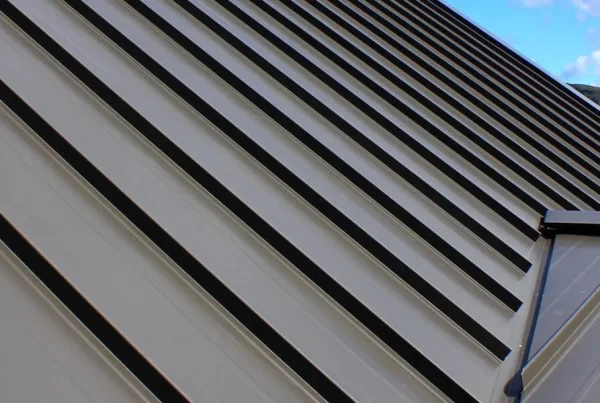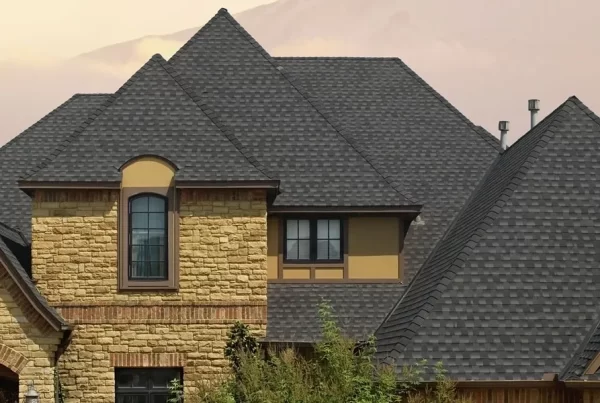Siding not only enhances the aesthetic appeal of a home but also plays a crucial role in its protection from various elements. However, siding problems can compromise this protection, leading to potential damage to the structure and interior of the home. This comprehensive guide aims to shed light on common siding problems, ensuring homeowners are well-equipped to identify and address these issues promptly, often necessitating siding repairs.
Introduction
Siding is the first line of defense against weather, pests, and other external factors. Despite its importance, it’s often overlooked until significant problems arise, similar to residential roofing issues. Recognizing the signs of siding problems early can save homeowners time, money, and stress. This blog delves into the most common siding problems, offering insights into their causes, implications, and solutions, paralleling the benefits of skylight replacement in enhancing home protection and energy efficiency.
1. Moisture Damage
Moisture damage is among the top siding problems, manifesting in various forms such as rot, mold, and mildew. This issue is particularly prevalent in wood siding but can affect other types as well, leading to the need for siding repairs. Signs include warped or soft panels, peeling paint, and visible mold patches. Preventing moisture damage involves ensuring proper siding installation, maintaining gutters and downspouts, and regular inspections for early detection, echoing the preventive measures taken in residential roofing maintenance.
2. Cracking and Warping
Changes in temperature can cause materials to expand and contract, leading to cracking and warping in siding, necessitating siding repairs. Vinyl siding is especially susceptible to this problem due to its plastic composition. Cracked or warped siding panels can compromise the home’s insulation and allow moisture to penetrate, exacerbating the issue. Regular inspections can help identify these problems early, preventing further damage.
3. Fading and Discoloration
Prolonged exposure to sunlight can cause siding to fade and discolor, a common problem that affects the curb appeal of a home. While this issue is mostly aesthetic, severe fading can indicate the siding’s protective coating has deteriorated, making it more susceptible to other problems, much like the fading of residential roofing materials. Choosing siding materials with UV-resistant properties and applying protective coatings can mitigate this issue.
4. Insect Infestation
Certain siding materials, like wood, are prone to insect infestations, including termites and carpenter ants. These pests can cause significant damage to the siding and underlying structure if left unchecked, leading to extensive siding repairs. Signs of infestation include visible holes, sawdust-like debris, and hollow sounds when tapping on the siding. Regular pest inspections and treatments are crucial in preventing and addressing this problem, similar to routine residential roofing checks for pests.
5. Loose or Missing Panels
High winds, poor installation, and physical impact can result in loose or missing siding panels. This not only affects the appearance of the home but also reduces its protection against the elements, similar to missing shingles in residential roofing. Ensuring proper installation and securing loose panels promptly can prevent further damage.
6. Bubbling and Blistering
Bubbling and blistering of siding panels are indicative of moisture trapped beneath the surface. This is often the result of poor installation or failure of the water-resistive barrier behind the siding, necessitating siding repairs. Addressing this issue involves removing the affected panels, correcting the underlying problem, and replacing the panels.
7. Poor Installation
Improper installation is a root cause of many siding problems, requiring professional siding repairs. This can include incorrect spacing between panels, failure to properly secure panels, and inadequate sealing at joints and edges. Professional installation and regular maintenance checks can prevent issues related to poor installation, as seen with residential roofing projects.
8. Water Stains
Water stains on siding panels can indicate issues with the home’s gutter system or the siding’s ability to repel water. These stains can also lead to mold and mildew growth if not addressed, necessitating siding repairs. Cleaning the affected areas and correcting any issues with the home’s drainage system can prevent further damage.
9. Thermal Expansion
Siding materials can expand and contract with temperature changes. If not properly accounted for during installation, this can lead to buckling, cracking, or gaps between panels, similar to issues faced in residential roofing. Ensuring that siding is installed with appropriate allowances for thermal expansion can mitigate these issues.
10. Maintenance Neglect
Neglecting regular maintenance, such as cleaning, painting, and sealing, can exacerbate existing siding problems and lead to new ones, necessitating siding repairs. Establishing a routine maintenance schedule can extend the life of your siding and prevent many common issues, echoing the benefits of regular maintenance and skylight replacement in residential roofing for enhancing home protection and energy efficiency.
Conclusion
Siding problems, if left unaddressed, can lead to significant damage to a home’s structure and interior. By familiarizing themselves with common issues, homeowners can take proactive steps to maintain their siding’s integrity and appearance. Regular inspections, prompt repairs, and ongoing maintenance are key to preventing siding problems and ensuring the longevity and protection of your home. Remember, early detection and intervention are crucial in managing siding issues effectively, keeping your home safe and beautiful for years to come.





